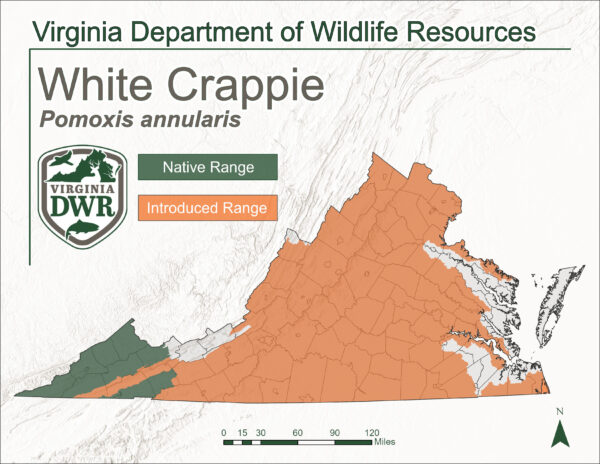Fact File
Scientific Name: Pomoxis annularis
Classification: Fish, Order Perciformes, Family Centrarchidae
Size: White Crappie can grow larger than 16 inches in length
Life Span: White Crappie can live for up to 9 years in Virginia waters
Identifying Characteristics
- Laterally compressed body shape
- Snout is slightly upturned
- Large mouth and eye relative to body size
- Dark vertical bars across the body
- Second dorsal and anal fin symmetrical in orientation and size
Diet
White Crappie feed heavily upon insects and other species of fish.
Distribution
White Crappie are native to the Upper Tennessee River drainage in southwest Virginia, but have been introduced elsewhere throughout the state.

Habitat
White Crappie orient to submerged structure, particularly during their spawning process.
Last updated: January 15, 2025
The Virginia Department of Wildlife Resources Species Profile Database serves as a repository of information for Virginia’s fish and wildlife species. The database is managed and curated by the Wildlife Information and Environmental Services (WIES) program. Species profile data, distribution information, and photography is generated by the Virginia Department of Wildlife Resources, State and Federal agencies, Collection Permittees, and other trusted partners. This product is not suitable for legal, engineering, or surveying use. The Virginia Department of Wildlife Resources does not accept responsibility for any missing data, inaccuracies, or other errors which may exist. In accordance with the terms of service for this product, you agree to this disclaimer.

